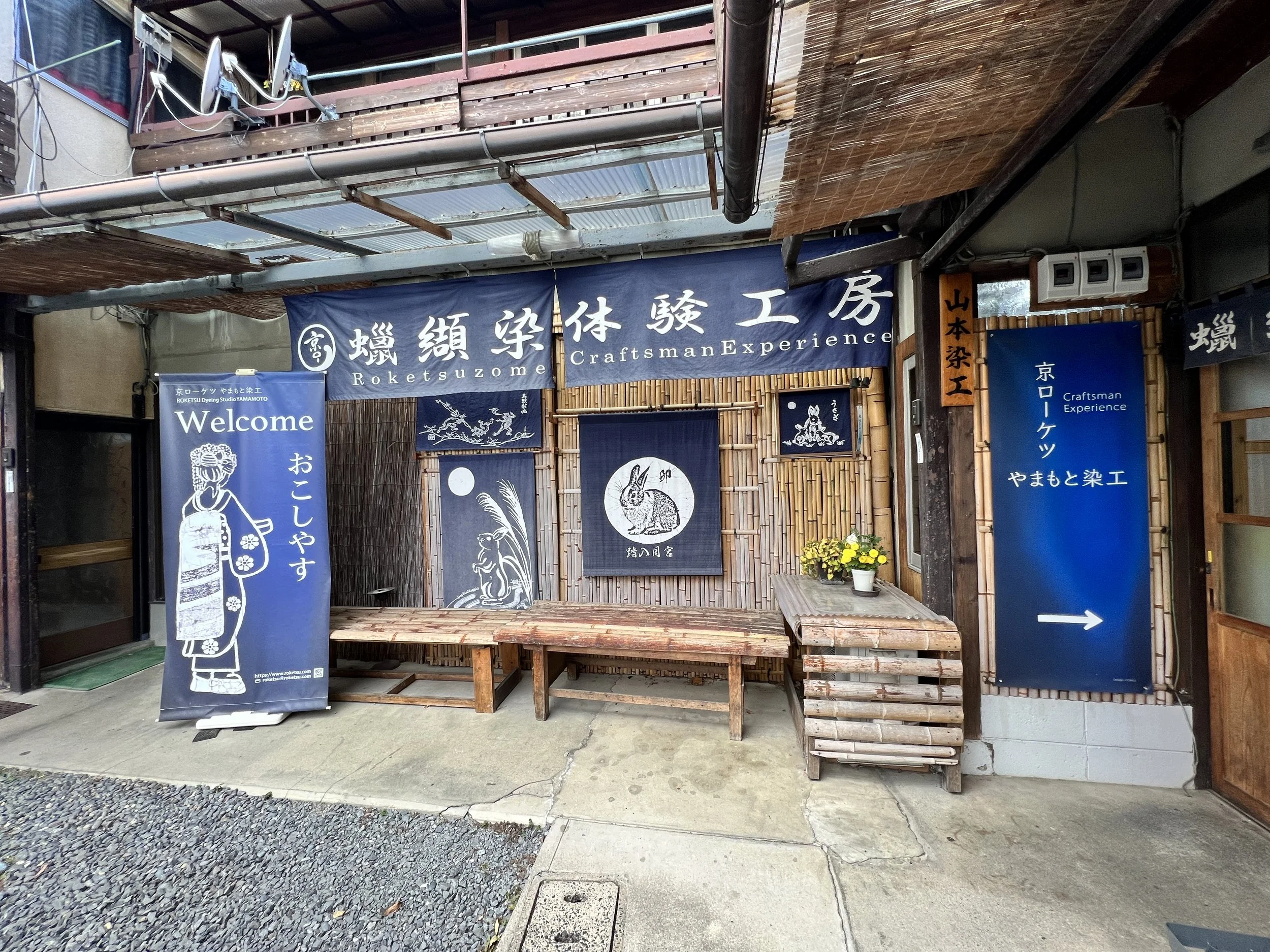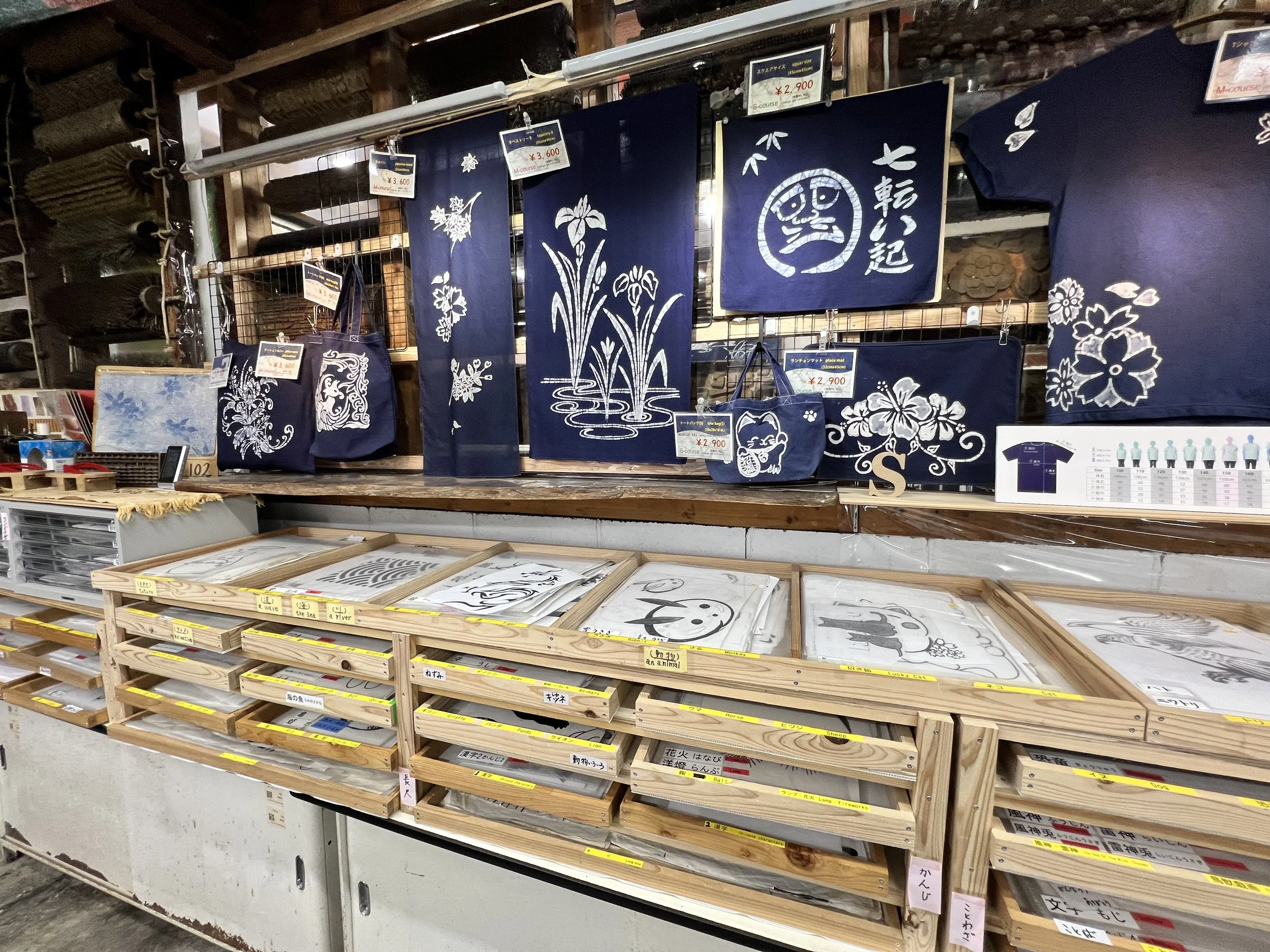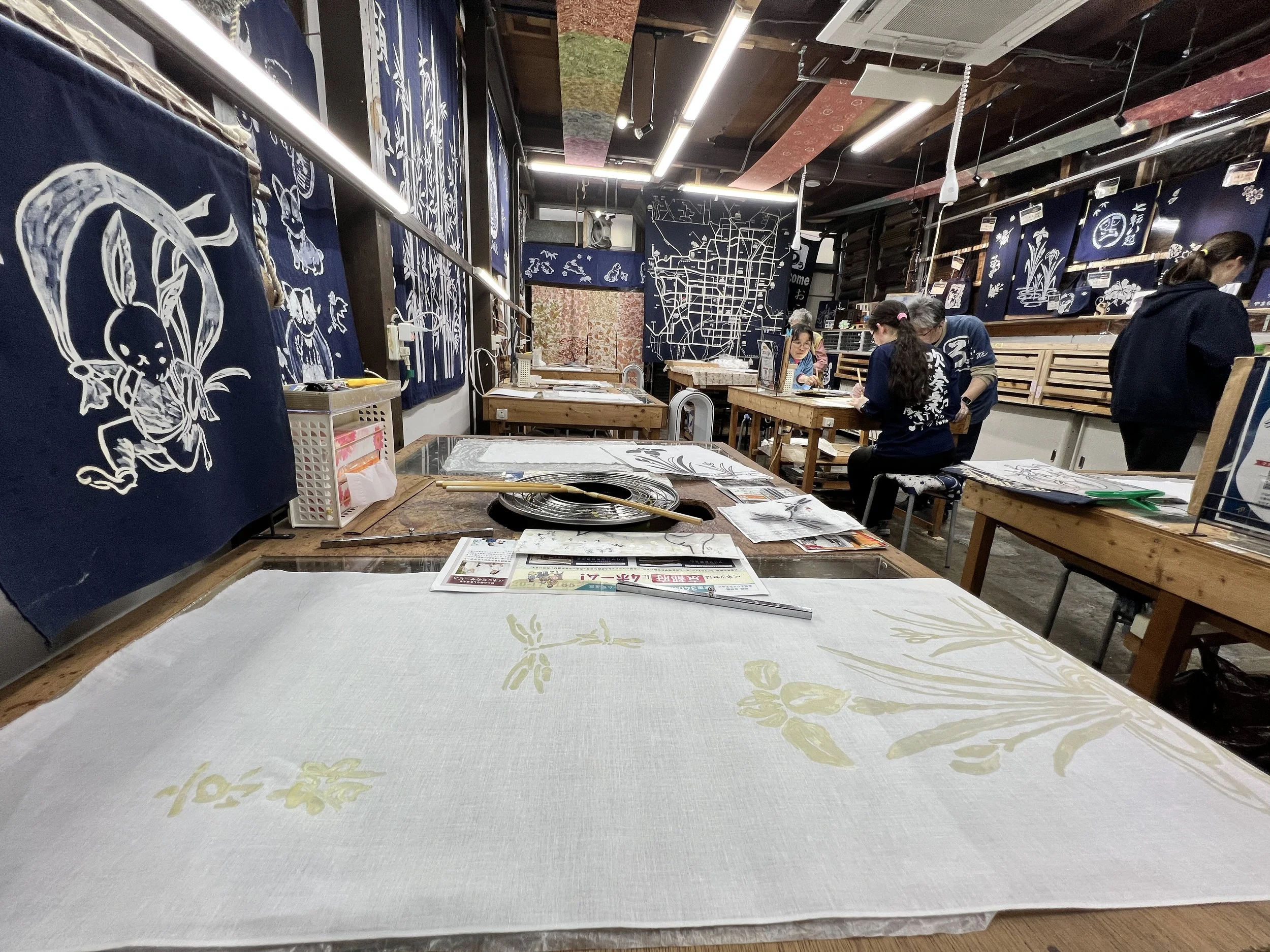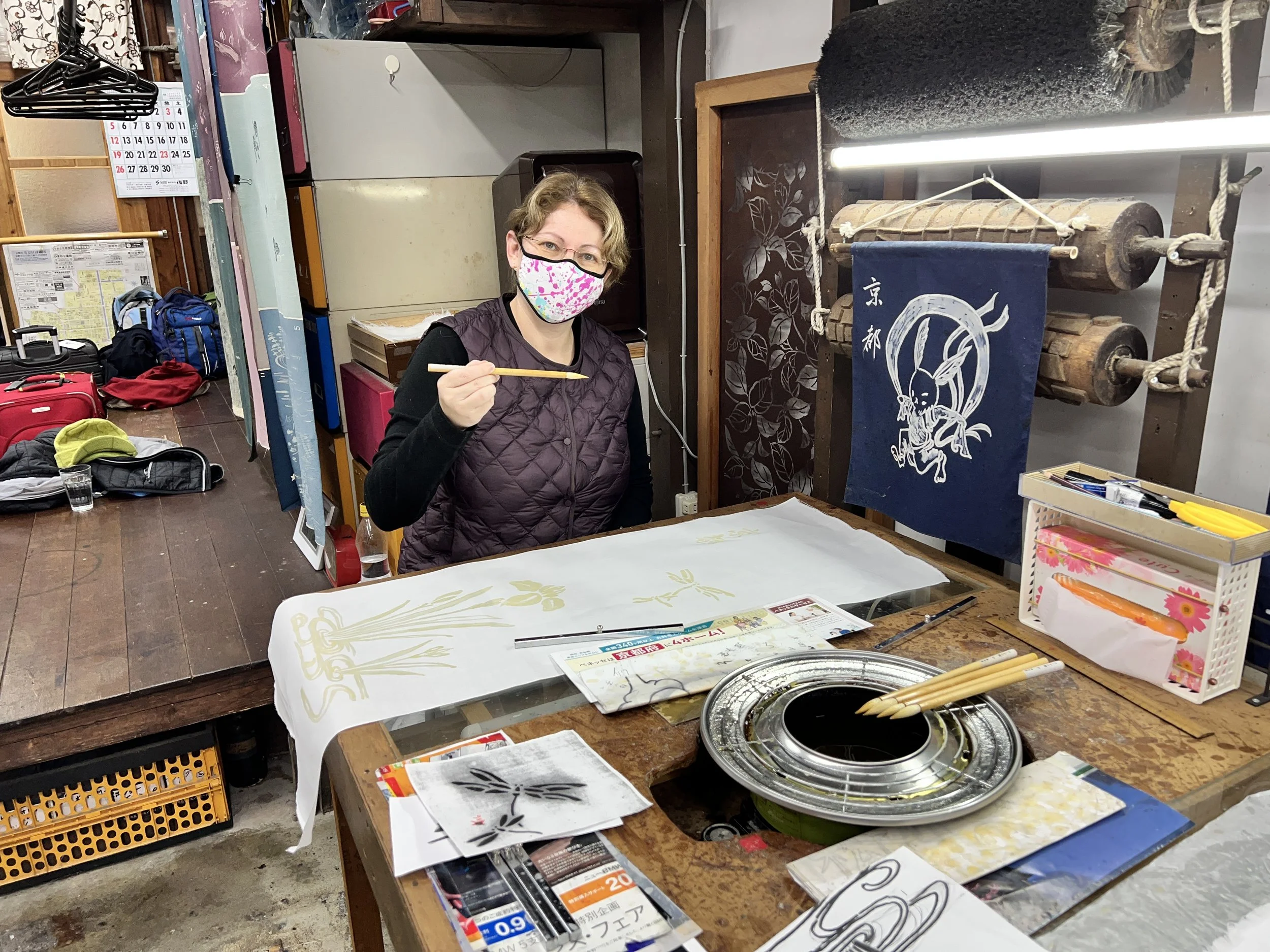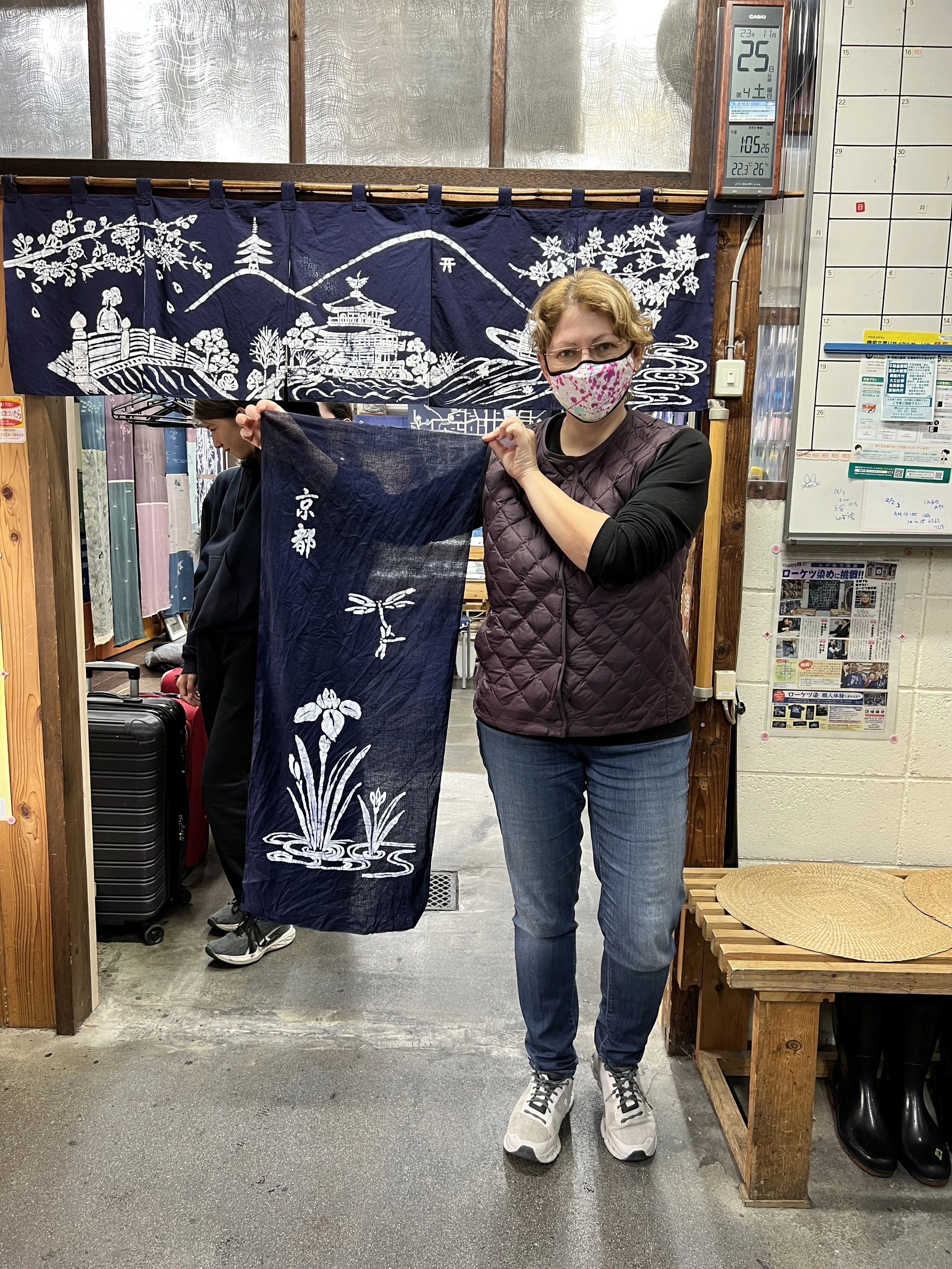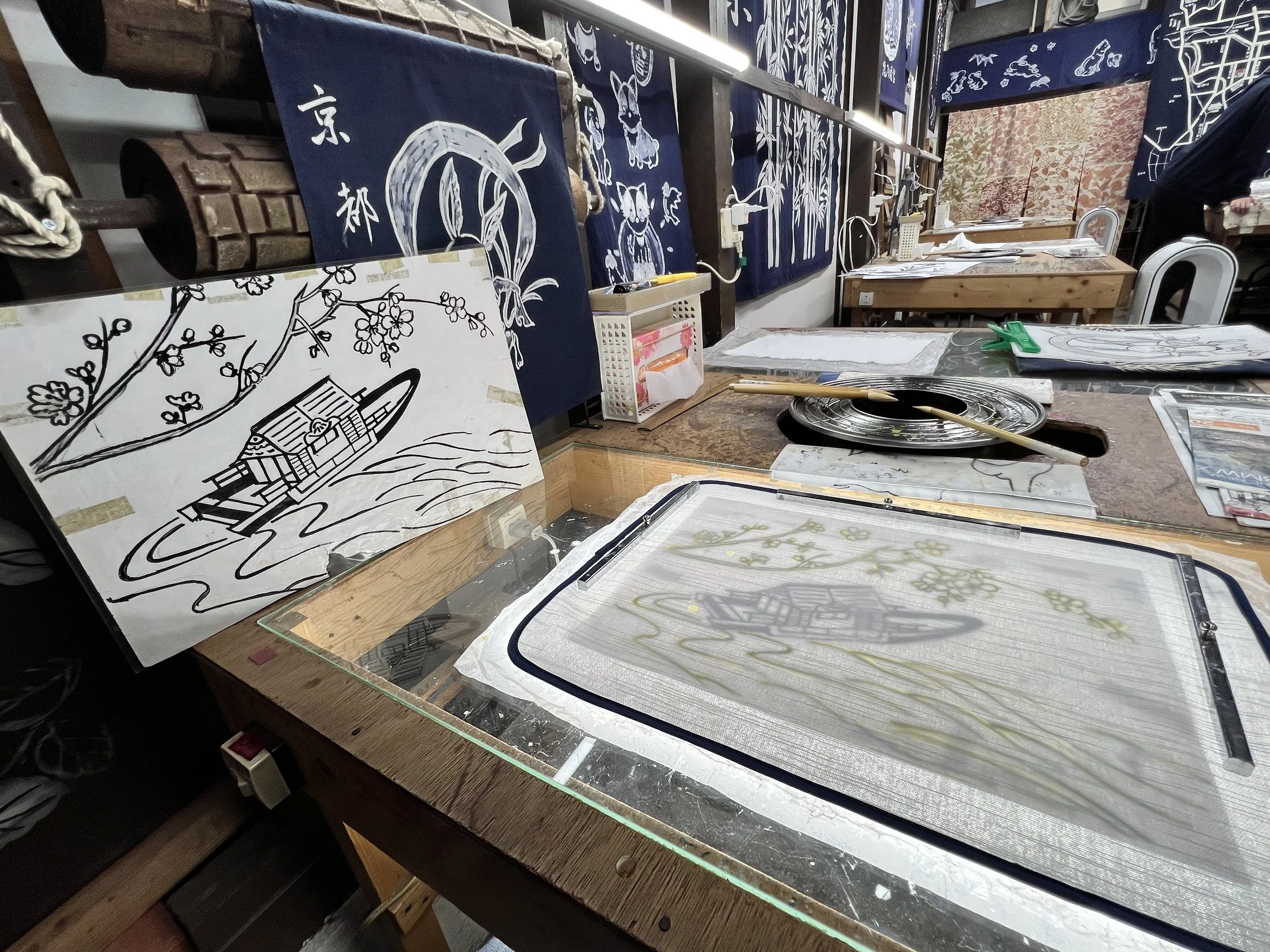Infinite Ways To Zen… in Blue
One thing I find wonderful about Japan is the seemingly infinite ability of its people to “Zen”. I will be using that word as verb from now on!
This country is full of life. Street lights flash above us. Buildings go up and up with restaurants and shops up to 4th and 5th floor. Street vendors hawk their wares. Lanterns light up the walkways. And rivers of people flow through the streets, the tunnels, and train stations at a rapid pace. The Japanese are a people on the move
Yet, in each of those places, there seem to be patches of space dedicated to the calm and quiet of Zenning. It can be a tiny little buddha statue tucked away in a corner behind the door, a miniature Torii gate* surrounded by bushes on a corner, a tiny tea cafe inside a busy train station, or a beautiful peaceful Shinto shrine** accessible (accidentally for us) by a small easy-to-miss alleyway off a major lit up street.
I found my own Zen on a chilly Saturday morning in a (faraway) suburb of Kyoto.
Roketsu Dying is a small cloth art studio run by a son and his older mother. The studio is made up of two parts — the wax painting section and the color-dying section. When I first entered, I selected what I wanted to paint — a towel — and spent a good 20 minutes trying to decide amongst the multitude of art drawings that I wanted to incorporate into my design.
Their art samples were very beautiful and my mind ran wild with all the possibilities.
In the end, I settled on a beautiful narcissus flower, a floating dragonfly and the characters for “Kyoto.”
Then, the real work began! I was settled at a small work table and taught how to use a paintbrush to paint a cloth with hot wax. Let me tell you — this takes serious concentration!
My perfectionist nature had me full of trepidation as I tried to trace the thin and curvy lines of the pattern I selected. But, oh no! The hot wax brush would have none of it. At this point, I asked the proprietor… “Oh sir, please help me. How do I make a straight line with this?” He looked back at me, shook his head, and said “No straight line! This — handmade. You make straight line — no hand made. You make bad line — good… hand made!” And that is where the Zenning began…
Without the constraint of perfection (aka straight lines that actually resemble the drawing I was copying), I was able to simply enjoy myself. There was a meditating quality to dipping the paintbrush, sweeping off the excess and painting line after line.
Once I finished “painting” my image, I found out that one actually needs two layers of wax for best quality. So, I set to copying my existing wax pattern again, making sure there would truly be no straight lines this time!
After I was done with the two layers of wax, I got to don a cool outfit with a “hugging” apron that required no strings (Japan is so inventive with the simplest things!), rubber boots, sleeves and gloves. I then set about to soak my previously white cloth in a big tub of blue dye. The wax’s role in all this was to keep the lines I drew white.
Once the 10 minute soak was done, the cloth was taken over by the master, who proceeded to dunk dunk dunk, spin-dry, soak, boil, boil again in salt water, dunk again, dry again and hang (whew) my creation.
Then, finally, after taking a picture, I was on to ironing in order to dry it.
The process was incredibly calming, and the little studio quiet the whole time. Only one other family was there that cold afternoon. I didn’t want to leave. So, I decided to just stay, and make another one. After three hours of Zenning while making art — I couldn’t ask for more.
Traveler’s Tips: The studio is a bit remote, so plan your way back by bus before you go and leave a bit of extra time. An Uber or Taxi is not guaranteed.


